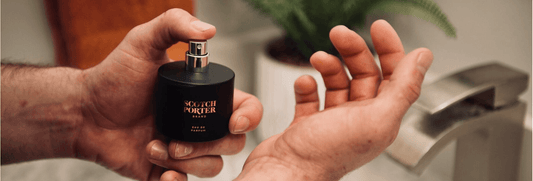
So here's the breakdown: there are five common skin types. There is normal, oily, dry, combination and sensitive. If you have no idea what any of that means, here's the test: simply blot a clean tissue on your face in the morning. That's the easiest way to find out your skin type. Want to know more? We have the answers.
Normal Skin
Here's a fact you might not know: your #blessed skin is smooth and radiant because it reflects light evenly. Plus, a normal skin type has good circulation and no trace of sebum (or oil) during that tissue blot test. Your complexion is perfectly balanced (not too oily or too dry), and you rarely have breakouts. Lucky you! You don’t notice any
changes in your skin throughout the day and can try many kinds of products without having a reaction. It's like you've been blessed by the skin gods, really. Don't let it go to your head though. Stay humble about it.
Normal skin may have:
- No or few imperfections
- No severe sensitivity
- Barely visible pores
- A radiant complexion
Oily Skin
When you tried that tissue blot test, chances are you sopped up that tissue nicely. Oily skin is really just that. Your face feels and looks moist and shiny (especially at midday, when oil is at its peak). You tend to have clogged pores, and your skin is prone to both noninflammatory acne (blackheads and whiteheads) and inflammatory acne (pimples and cystic zits). Don't beat yourself up over it though, there are really key ways to combat the oil. Have faith!
Oily skin may have:
- Enlarged pores
- A dull or shiny, thick complexion
- Blackheads, pimples, or other blemishes
Dry Skin
Dry skin can be a pain...literally. Your skin can crack, peel, or become itchy, irritated, or inflamed. You flush easily (and not just when you're embarrassed or feverish) or have red patches or eczema. Your skin often feels rough, tight, or dry in the afternoon or evening—even two hours after applying moisturizer. Skin products, sunblocks, and cosmetics sometimes sting or cause redness, leading you to punch the air in frustration. If it’s very dry, it can become rough and scaly, especially on the backs of your hands, arms, and legs. This too is beatable. You'll get through this. Trust us.
Dry skin may have:
- Almost invisible pores
- Dull, rough complexion
- Red patches
- Less elasticity of the skin
- More visible lines
Combination Skin
This is like a two for one sale for the face. Your skin can be dry or normal in some areas and oily in others, such as the T-zone (nose, forehead, and chin). while your temples, eye area, and cheeks are really dry. So in essence, your face is like a skin type road map. You also fall into the combination category if your skin changes according to the climate or season—sometimes it’s completely oily, other times it’s dry. Many people have this type, so you're not alone in this world. The solution though varies, as your skin may need slightly different care in different areas.
Combination skin may have:
- Pores that look larger than normal, because they’re more open
- Blackheads
- Shiny skin




